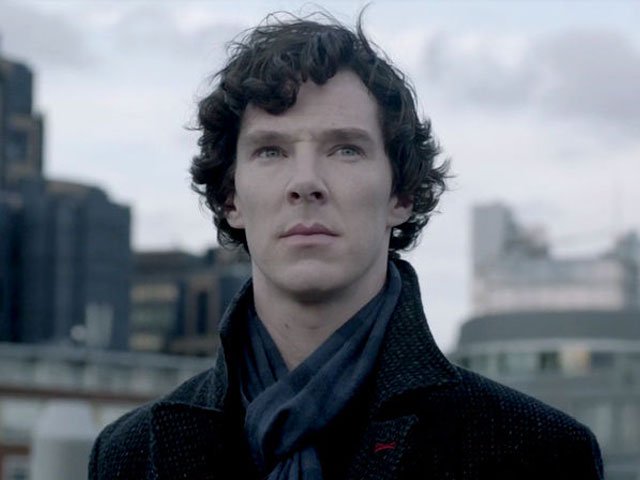
That's elementary, according to genealogy website Ancestry.com. Cumberbatch is distantly related to author Sir Arthur Conan Doyle, who created the brilliant but quirky sleuth some 130 years ago, the website said on Sunday.
Cumberbatch, 40, star of the Emmy award-winning BBC TV series, Sherlock, is a 16th cousin, twice removed of Doyle.
Sherlock might end with season four
The two are related through 14th century English nobleman John of Gaunt, who, according to records, was Cumberbatch's 17th great-grandfather and Conan Doyle's 15th great-grandfather, Ancestry researchers said.
John of Gaunt, born about 1340, was a son of England's King Edward III, meaning that Cumberbatch and Conan Doyle also have a distant royal connection.
"How rare that an actor in a major series has the chance to play a character created by a relative, especially one as iconic as Sherlock Holmes," said Jennifer Utley, a family historian at Ancestry.
Sherlock, a modern twist on the life and investigations of the 19th century London detective, first aired in 2010 and returns for its fourth series on Sunday on both U.S. and British television.
Diversifying: As strange as it gets
The show, in which Cumberbatch plays Holmes as a haughty, socially inept detective to Martin Freeman's calm, practical Dr. John Watson, is the most popular TV drama in Britain, according to ratings data, and has been sold to 180 other countries.
Conan Doyle published the first of about 60 Sherlock Holmes stories in 1887. The eccentric, violin-playing character has since become one of the best-known fictional detectives in the world and the inspiration for hundreds of movies, stage plays, books and TV shows.
Ancestry said its researchers looked at everything from church records, censuses, land deeds, newspaper announcements and tombstones to establish the link between Cumberbatch and Conan Doyle.
Have something to add in the story? Share it in the comments below.


1723278472-0/BeFunky-collage-(4)1723278472-0-165x106.webp)














COMMENTS
Comments are moderated and generally will be posted if they are on-topic and not abusive.
For more information, please see our Comments FAQ